|
|
Area/Range |
|---|---|
|
|
12.57127°N / 54.02129°E |
|
|
Hiking, Mountaineering, Trad Climbing, Scrambling |
|
|
Spring, Fall, Winter |
|
|
4921 ft / 1500 m |
|
|
Overview
Imagine an island with spectacular mountains made of both granite and of limestone, unique biology with some of the most alien plants on Earth, outstanding snorkeling and beaches; an island that is nearly devoid of tourists and climbers. This is Socotra. It is 3,665 km2 (1,415 sq mi), and is the largest of four islands that make up an archipelago also called Socotra. It was recognized as a UNESCO World Heritage Site in 2008. With that said, Yemen has had political instability and security concerns over the past several years and the US State Department currently recommends deferring travel to Yemen.
Maps
TOYEMEN has created an outstanding map Socotra which shows many of the key places of interests on the island, and they generously allowed me to reproduce it on this website.
Because the names on the map come from an unwritten language that has been transposed into Arabic, there is variation in the English spellings of many of the places.
A second site found on the Socotra Eco Tours website has a series of excellent maps of the island including one of its geology, its topography, and the location of nature preserves.
Geology
Socotra broke off of Gondwanaland over six million years ago, and is now located some 240 kilometers (150 miles) east of Somalia and 380 kilometers (240 miles) south of the Arabian Peninsula. The center of the island contains the Haghier Mountains which are composed of dramatic granite peaks and domes, with vegetation that varies between lush and brown depending upon rainfall. Much of the rock appears of fairly high quality in terms of climbing, although there are not always abundant continuous crack systems. Most people believe that these mountains have remained above sea level throughout history. Ringing this is a dramatic region of 300-700 meter high plateau and canyons composed almost exclusively of limestone that was deposited around the central mountains during the Cretaceous and Palaeocene-Eocene.The plateau gives way (often at dramatic cliffs) to a narrow band of coastal plain that dip down into the Arabian Sea on the north and the Indian Ocean to the south. These plains contain Miocene and Quaternary age marine deposits. One of the sites that I used to get the geologic details was operated by the Socotra Karst Project. A second site that has access to a more academic article from the 1960's can be found here.
History
People have inhabited Socotra for thousands of years. Sinbad's men are reputed to have visited as were expeditions sent by Cleopatra. Alexander the Great's men also visited and for years the island was important in the trade of aloe and frankincense. For centuries, Christianity was prominent on Socotra but in 1511 the Mahra sultans took over control and it has largely been Islamic after that. In 1967 it became part of South Yemen, and with the Unification of North and South Yemen in 1990, it became incorporated as part of the Republic of Yemen.
In 1999, an airport was built near capital and largest city on the island, Hadibo. At about the same time, a number of excellent paved roads were also built making many areas of the Socotra easily accessible, and opening up the possibility for ecotourism. Due to the orientation of the runway, it is now possible to access Socotra year round including the peak of the windy season. The airport has also made it impossible to import Qat, a mild narcotic that grows on the mainland which costs some users much of their disposable income. Currently, there are about 40,000 people living on the island, many of whom speak an ancient and unwritten language.
Recent rumors suggest that there might be a prison built here to house people who were formerly held at Guantanamo.
Biology
The island is perhaps best known for its unique botany, with over a third of the plant species endemic to the archepelago. Perhaps most famous among all of these is the dragonblood tree (Dracaena cinnabari). My guide on the island told me that according to legend, there was once a king who had a beautiful daughter. Sadly, she became sick and nothing that was done could improve her condition. Distraught, the king promised that anyone who successfully cured the princess could marry her. In time, a man approached the king, saying that he knew of an island where there was a medicine but that the island was guarded by phoenix (dragons), and he asked the king for some soldiers to help him in killing the phoenix to retrieve the medicine. This was accomplished and he ended up saving and marrying the daughter, but at the spot that each phoenix was killed, it was resurrected as a dragonblood tree. When scarred each tree runs red sap that is used as a cosmetic coloring, for paints, and for medicine.
However, this is truly a land of fabled wonder, and other trees include the bottle tree (Dorstenia gigas), the World's only form of cucumber that is a tree (Dendrosicyos socotranus), frankincense trees, multiple endemic types of aloe, and many others plants. It seems to be the land that Dr. Seuss used as inspiration for many of his classic tales.
The only native mammals to the island are bats although now there are about 100,000 goats (really). However, there are many birds including the all pervasive Egyptian vultures, reptiles including vibrant geckoes and small snakes, and a host of endemic insects.
Climate
Socotra is located 12 degrees north of the Equator and has an average yearly temperature of 27 degrees Celcius with a variation of about 6 degrees through the year. It receives most of its precipitation in November and December, with a smaller amount in late May and June, receiving a total of about 19.5 cm each year. There will be significant variation in this figure with significantly more than this in the central mountains and less in the low lying areas. I was told that the best time to visit the island is between January and March with frequent clear calm days and moderate temperatures. All say to avoid the months of June until September when there is nearly constant very strong north-east monsoon winds. With that said, I visited during the first week of June and snuck in my visit with reasonable weather although conditions grew more blustery as the week progressed. A good site to see detailed climate information that I used in writing this can be found here.
Climbing
Climbers started coming to Socotra in the 1990's with the arrival of British Climber Andre Hedger with some of his friends. A trip made by Mike Libecki and Josh Helling in November of 2008 is detailed in the 2009 American Alpine Club Journal
They climbed a couple prominent spires, finding evidence of humans near the top of the higher tower from some hundred or so years ago, despite the fact that they found no easy way to the summit.
Supposedly, Rock and Ice #214 has a discussion on Socotra with Brittany Griffith, saying that the political situation in Yemen does not justify a visit. I have not seen this article.
I was told that a group visited the island in 2013 and climbed several of the highest and steepest towers.
I climbed four mountains on the island including two smaller peaks in the Haghier Mountains and found them wonderful. I ran into a problem that the highest peaks required the presence of a local guide. I enjoyed hiking with him, but he was not experienced with climbing and it would have taken mutiny on my part to ascend a third class route to the top of one of the larger peaks as he was convinced that I would fall off… I would recommend anyone going there to include a light rack and a rope if nothing else to ensure that they know that you are serious about climbing. One of the locals in the mountains said that he had climbed one of the most impressive peaks there. With this comment and evidence found by Mike Libecki and the long history of people on the island, it is highly possible that many or most of the peaks have been climbed at some point in time.
Caves
With large areas of the island composed of limestone, there are many large cave systems located throughout the island. Hoq Cave is located near the Eastern end and is three kilometers long with a huge chamber rivaling and maybe even exceeding Carlsbad Caverns in size although the stalagmites and stalactites are not as pervasive.
Dejub Cave is shallow but has spectacular features at its mouth and is located near the island's southern coast.
Beaches
Beautiful white sand beaches can be found in many locations on Socotra. Many consider Qalansiyah with its white sands, rocky peaks, and large lagoon, the most beautiful on the island if not in the World. Others say the honor goes to Shoab Beach on the West portion of the island. On the Eastern portion of Socotra, Arher beach sports magnificent dunes and a crystal clear stream. Personally, I liked the easternmost tip of the island where the Arabian Sea and Indian Ocean boiled together in a foaming mass as seabirds drifted on the building monsoon winds above.
Snorkeling, Diving, and Surfing
Surrounded by the warm waters of the Indian Ocean, and Arabian Sea, there are several excellent places on the island to snorkel and scuba dive. Dihamri Marine Protected Area has nice reefs, with an abundance of fish, turtles, and even giant clams. Some claim that one of the best places to dive in the World is at the Qalansiyah Protected Area with groupers, rays, reef sharks and many other marine organisms.
During the windy season, it is reported that the southern coast of the island has excellent surfing.
Canyons
Several deep canyons cut through the thick limestone plateau of Socotra. The most famous of these is Dirhor Canyon, which extends down from the Haghier Mountains south towards the Indian Ocean. Access is either from hiking through the mountains, or from the otherworldly Dicksam Plateau. The canyon has tall, limestone walls, palm trees, endemic plants and beautiful pools of water, at least one of which is a popular swimming hole.
Natural Arches
Given the quantity of limestone present on Socotra, it has one of the highest concentration of natural arches anywhere that I have visited. In fact, I saw arches on the majority of hikes and drives that I took on the island. Although some are large and apparent from a distance, a large number of them take some searching, and are located down in small alcoves and unconformities in the rock. Frequently, the shapes seen do not match that seen in more frequently viewed areas such as Arches National Park, but are irregular and surprising instead. There are even arches in the granitic areas, although not as common.
Homhil Protected Area
I do not want to go through every site on the island; quite a few of them can be read about on web pages of the commercial companies that offer trips to Socotra. However, with that said, I did feel it necessary to say a few words about Homhil as it is a truly special place with features that are among the most unique in the World. Forests of frankincense, bottle trees, a thick grove of Dragonblood trees, a spectacular pool perched right at the edge of a steep cliff dropping down towards the Arabian Sea; this place has it all. On my arrival to this protected area, I purchased some frankincense from two girls who approached me soon after I left the car. I was also offered the dried sap of the dragonblood - red and outstanding for making cosmetics, but declined buying this. I would recommend a stop at Homhil to anyone visiting Socotra.
Sana'a
Most travelers to Socotra arrive via Sana'a. The entire old city is a UNESCO World Heritage Site, with tall ancient buildings and a fabulous market, and is well worth a visit. Not far outside of town is the surprising Palace on the Rock that, although not as old, is thoroughly dramatic and also great to see.
Getting There
Update: On April 30, 2018 troops from the United Arab Emirates took administrative control of the airport and the town of Hadibu and continue to be in control of the island. The situation on the mainland of Yemen continues to be unstable and although the national government condemned the take over, no actions have been taken.
Currently, there are weekly flights being run from the UAE to Socotra on Air Arabia every Tuesday, leaving Abu Dhabi at 10 AM and arriving at Socotra at 11. There have also been flights at times from Cairo.
The United States government has issued a travel advisory against travelling to Yemen and Socotra (See advisory here). The violence that is occuring on the mainland has not to date been experienced on the island and current reports are that the island is very safe, but with that said, if you go there as alway with travelling, you are doing so at your own risk.
In past years, commercial airline flights occurred to Socotra several times a week. The schedules change, but consistently, the flights ran on at least Monday, Wednesday, and Saturday. Yemenia Airlines flew once a week (Monday) from Sana'a. Felix airline few from Sana'a several times a week and from Sharijah in the UAE once each week via Mukalla in Yemen.
As noted above, significant security concerns exist. Currently, there is a travel advisory against travel in Yemen from both the United States State Department, and the British Foreign and Commonwealth Office. A couple forums get into safety on the island: Here is a Trip Advisor forum where many people who have been there vouch for the safety of the island although one woman relates a scary situation. An online chat relating to climbing on Socotra that largely expresses concern with travel can be found here. The people in this discussion did not have first hand experience on the island. Another point to keep in mind is the fact that there is very little infrastructure established for tourism. As a result, it is best to bring any essentials that you may need such as sunscreen as you might not be able to find these on the island! I also brought basic medical supplies such as Imodium, Advil, water purification tablets, and ciprofloxacin. It was recommended to me not to take malaria prophylaxis, as occurrence on the island is quite rare, but some recommend this.
Red Tape
Entry into Yemen requires a visa that is difficult to obtain without working through someone within the country. Several groups noted below arrange tours to Socotra and are often able to expedite getting one for you.
Climbing peaks can require the hiring of a local guide who might be unfamiliar with mountaineering. Happily, the guide that I had was extremely friendly and enjoyable to hike with. By hiring locals, there is bound to be more buy in from them in maintaining the spectacular ecology and scenery that exists on the island, so in balance, this arrangement is beneficial. A pair or group of climbers with technical gear will likely have more success than I did in convincing the guide that you are able to attempt the peak safely.
There are definite security concerns with entering the country. Historically, Socotra has not seen the problems that have been experienced on the mainland however it is only a plane ride away. I found the people on Socotra extremely friendly and felt safe throughout my stay.
Challenges
Although Socotra is a spectacular place, there are a few threats to the wellbeing of the island and tourism there.
There are currently many thousands of goats that are essential for the welfare of the people living on Socotra. Unfortuately, the goats eat just about anything small and tasty and young dragonblood trees are not present. In time, the species is profoundly threatened.
There is much littering that makes the towns and areas where people congregate somewhat unappealing as a tourist destination.
Camping
Camping is possible throughout the island at designated places. Six of the protected areas where there are designated sites include: Amak - a beach on the southern coast rimmed with pleasant groves of date palms. Dihamari - at a pebble beach, this campsite is right at the edge of a marine protected area with lots of cool fish and reef creatures. Ditwah - next to the lagoon; one of the most beautiful places on Socotra. Homhil - below a wonderful grove of dragonblood trees. There is a beautiful swimming pool not far away. Rosh - near a coral reef. I did not go to this place so I cannot comment upon its beauty. Skand - at the foot of some nice peaks. Amak and Rosh have solar panels and it is possible to recharge electronics.
Some areas require a fee during usual tourist times.
Commercial Companies
Travelling alone in Yemen is difficult at this point in time. Several companies provide services to help you with your travels. Below I have listed several. I used Socotra Eco Tours and was very much satisfied with the service that they provided. I cannot speak for the other companies. Trip Advisor, though, has extensive discussion about many of these companies.
Socotra Eco Tours - There is extensive information about the island on their webpage.
TOYEMEN - The Webpage has considerable information about Yemen, Socotra, risk of Travel, an excellent map and the like.
External Links
I became aware of Socotra through an article in the National Geographic Magazine, an inspiration for so many of the trips that I have taken.
WikiTravel has a site that talks basic and names four hotels that exist in Hadibo. Hoq cave is not volcanic, though.
A site with some nice photographs is here.
There is a You Tube video of some unusual climbing here.
There are quite a few general videos on Socotra on You Tube including this one.
If Kite Surfing is your thing, this video might be for you!
A video with some nice photography of the island as well as mainland Yemen can be accessed here.
Wikipedia has a nice site on Socotra. I used it for some of the general facts and figures about the island.
Thanks
TOYEMEN The Jewel of Arabia for generously allowing use of their outstanding map of Socotra on this website.
I would also like to thank the staff of Socotra Eco Tours" for showing me around the Island of Socotra and exposing me to its wonderful sites.
I would also like to thank my wife, Julie, for putting up with my idiosyncrasies for all of these years.


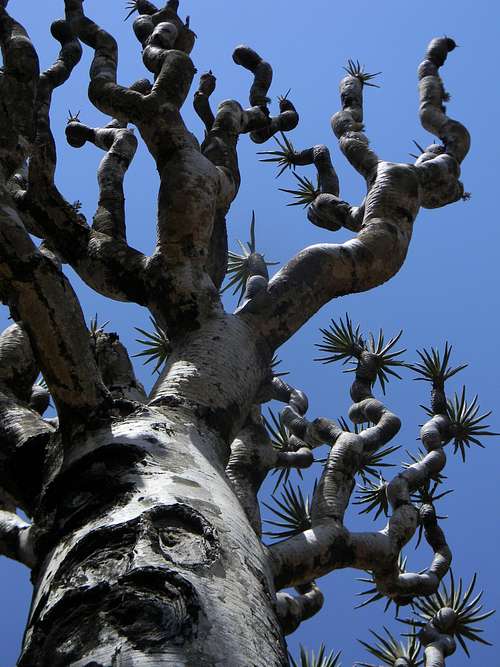
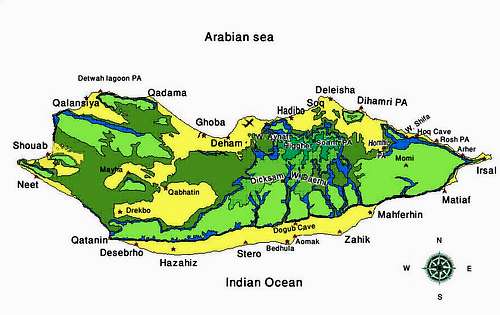
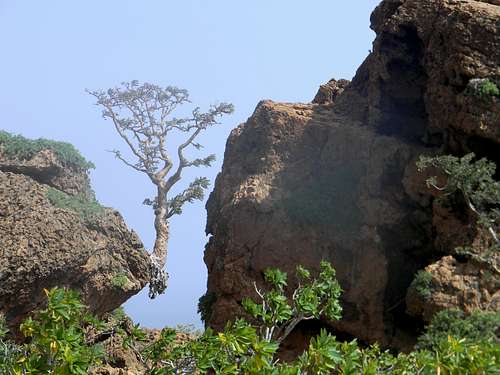
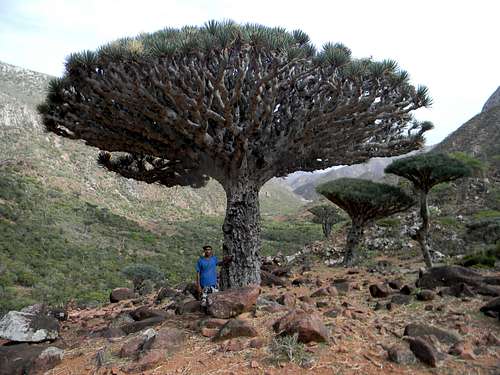
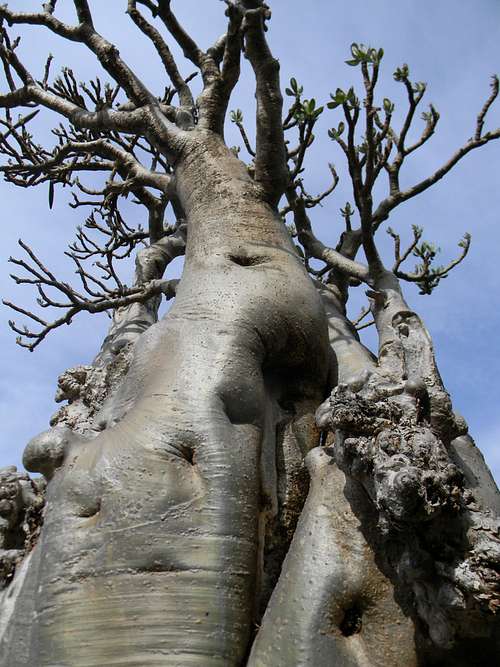
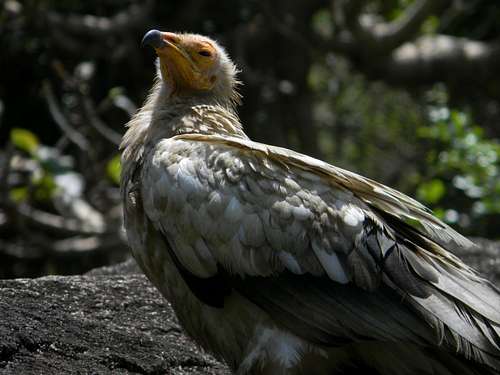
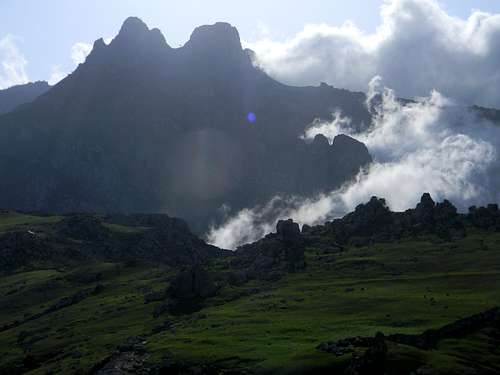
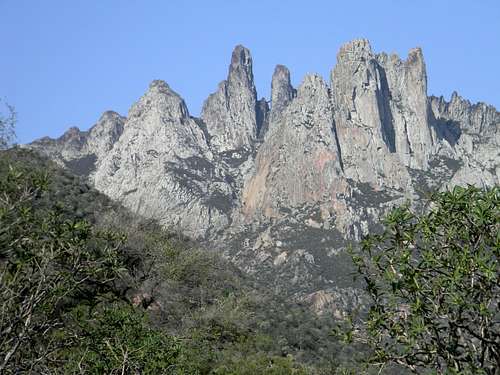
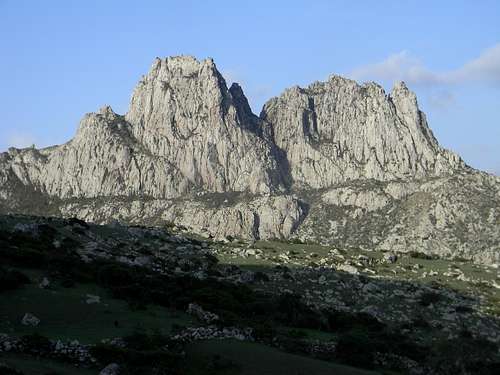
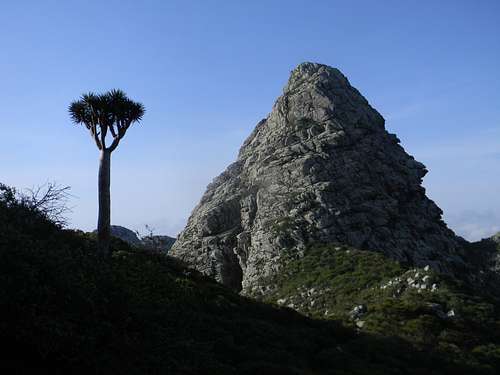
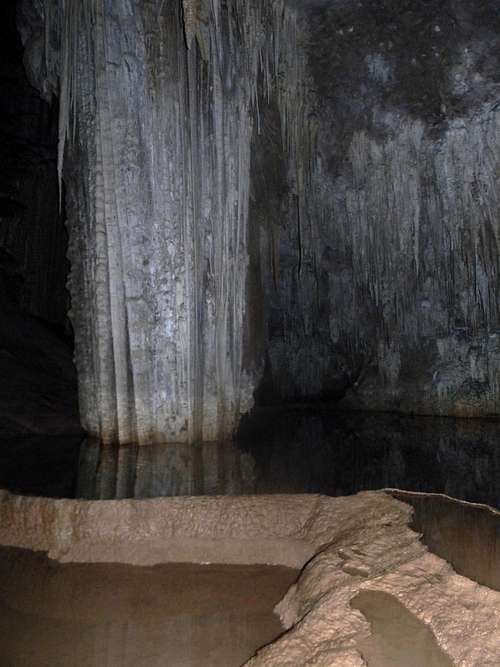
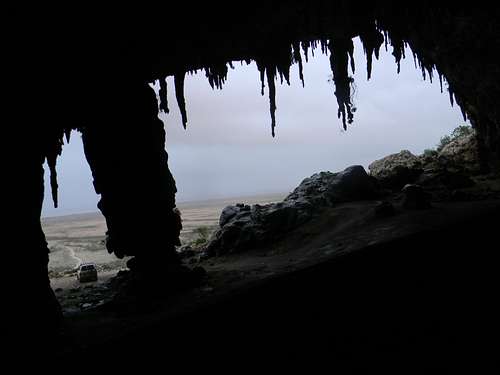
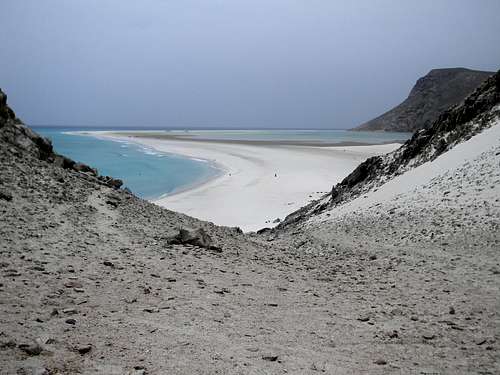
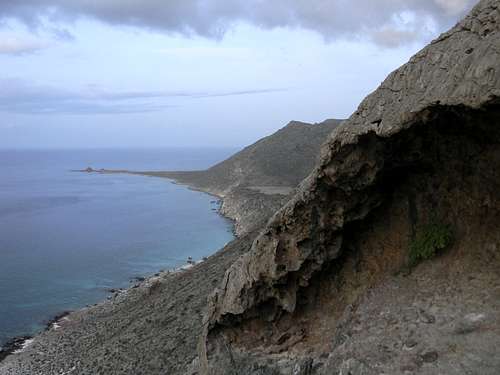
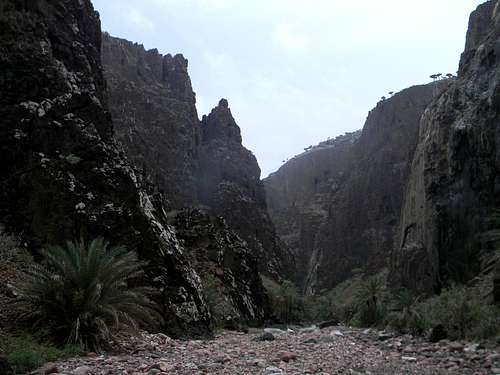


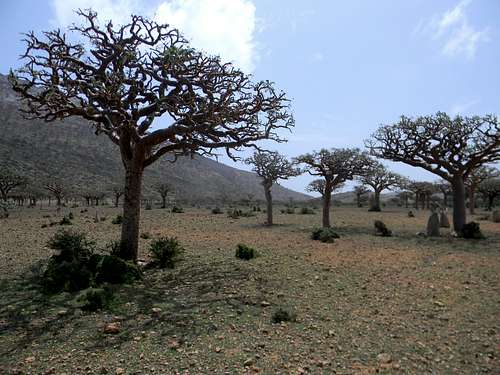



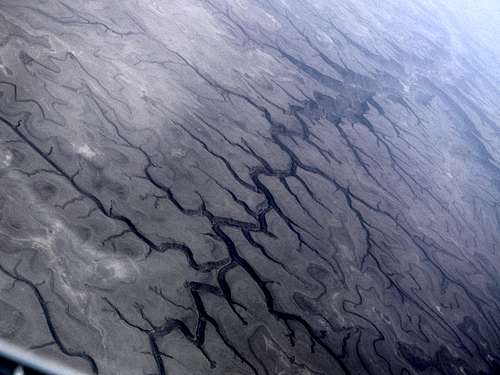
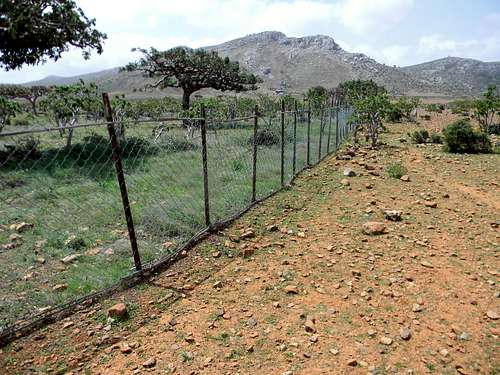

Damien Gildea - Jul 23, 2014 5:34 am - Hasn't voted
First ClimbersBritish climber Andre Hedger and friends visited the island to climb in the late 1990s. Andre told me this personally some years ago and I mentioned it to Mike Libecki last year.
RobSC - Jul 23, 2014 12:16 pm - Hasn't voted
Re: First ClimbersThanks for letting me know, Damien. I will incorporate this into the main text. If you know more details I can include that as well.